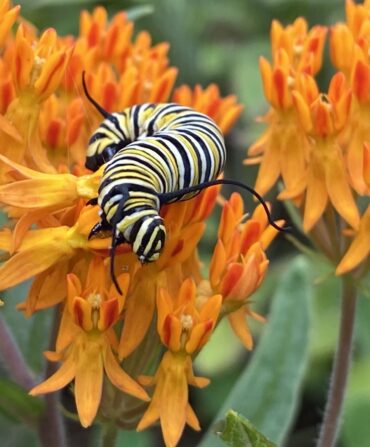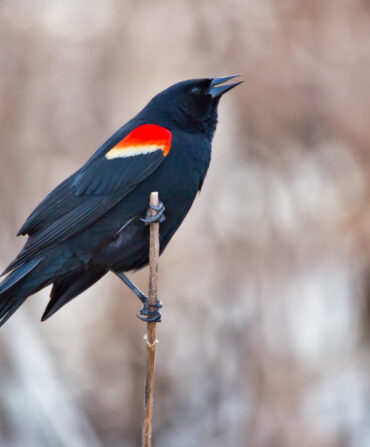Fall and spring are the temperature sweet spots for snakes. As ectotherms, they can’t regulate their body temperature, so winter’s chill sends them into brumation (reptile speak for hibernation), and summer’s heat sees them doing more lounging and less slithering (something any human who has spent a summer in a Southern state can relate to).

Our region is home to well over a hundred species, most of which people haven’t heard of, much less seen or been bitten by. The vast majority of those aren’t venomous. A few are, though: copperheads, water moccasins (also called cottonmouths), several varieties of rattlesnakes, and the elusive coral snake. Below, two herpetologists weigh in on the basics of keeping safe.
But first, a statistic. Kristen Cecala, a professor of ecology at Sewanee: The University of the South in Tennessee, points out that over 80 percent of snake bites occur when someone is trying to kill or move the snake. “Venomous snakes are dangerous, but they aren’t malicious,” she says. “If you are posing an active threat to them, of course they will try to defend themselves.”
And a dose of perspective from JJ Apodaca, the executive director of the Amphibian and Reptile Conservancy in Asheville: “Venomous snakes in the wild kill about two to three people a year in the United States, on average. Cows account for twenty-two deaths. Horses, twenty. Bees? Over a thousand. You are more likely to have a vending machine fall on you and squash you to death than to be killed by a venomous snake.”
Even so, here’s what to know.
Copperheads
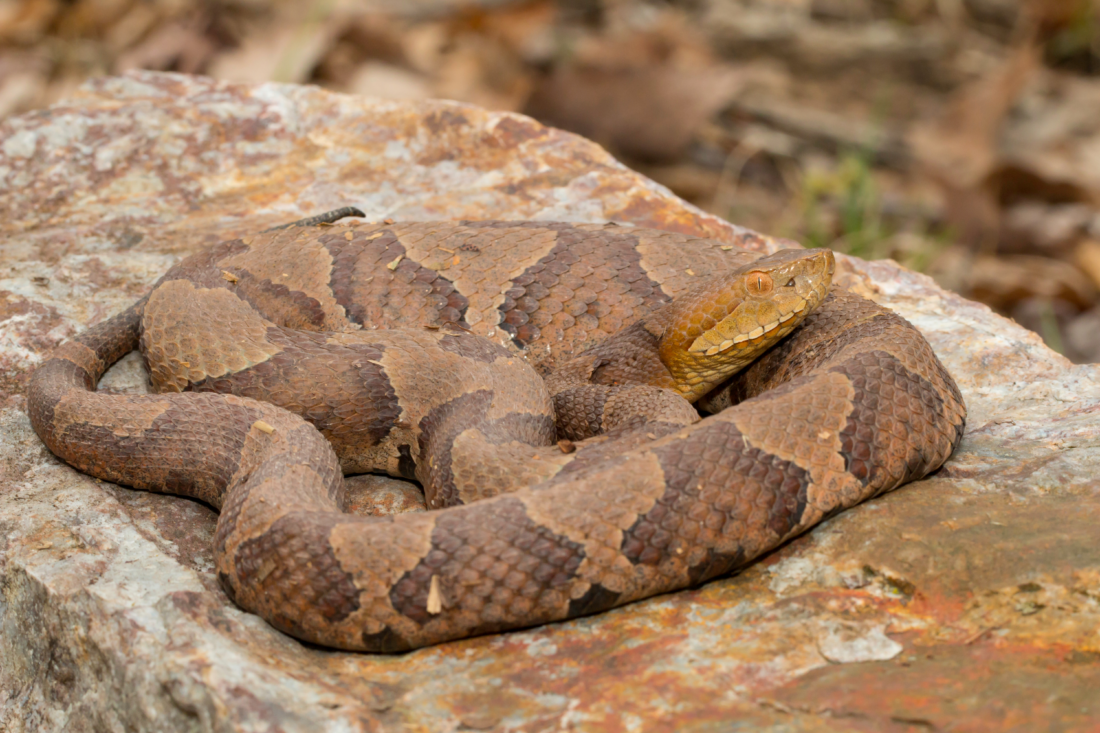
Habitat: “These are the adaptors and the survivors of the venomous snake world,” Apodaca says, “and the snake you’re most likely to encounter.” They live across the South in many habitat types, from forests to wetlands to rocky areas.
Identification: Copperheads have a golden-brown head and darker-colored hourglass shapes on the body. Go by that pattern, as it’s a better indicator than the old adage about triangular heads. (Nonvenomous snakes, including water snakes, can have triangle-shaped heads too.)
Tips: In your backyard, be extra careful around wood piles or grass clippings, stone walls, and sawdust piles, and wear gloves before sticking your hands anywhere with lots of potential cover. Fall is baby copperhead season, so there are extra bodies on the landscape, but contrary to the myth, babies aren’t more dangerous than the adults. While they are more vulnerable due to their small size and might be more likely to strike, they’ll still inject less venom than a full-grown snake.
Fun fact: To aid with foraging in the first and most difficult year of their lives, baby copperheads have a secret weapon: a bright green tail that looks just like a worm. They wiggle it to attract prey they can manage, like small amphibians and reptiles.
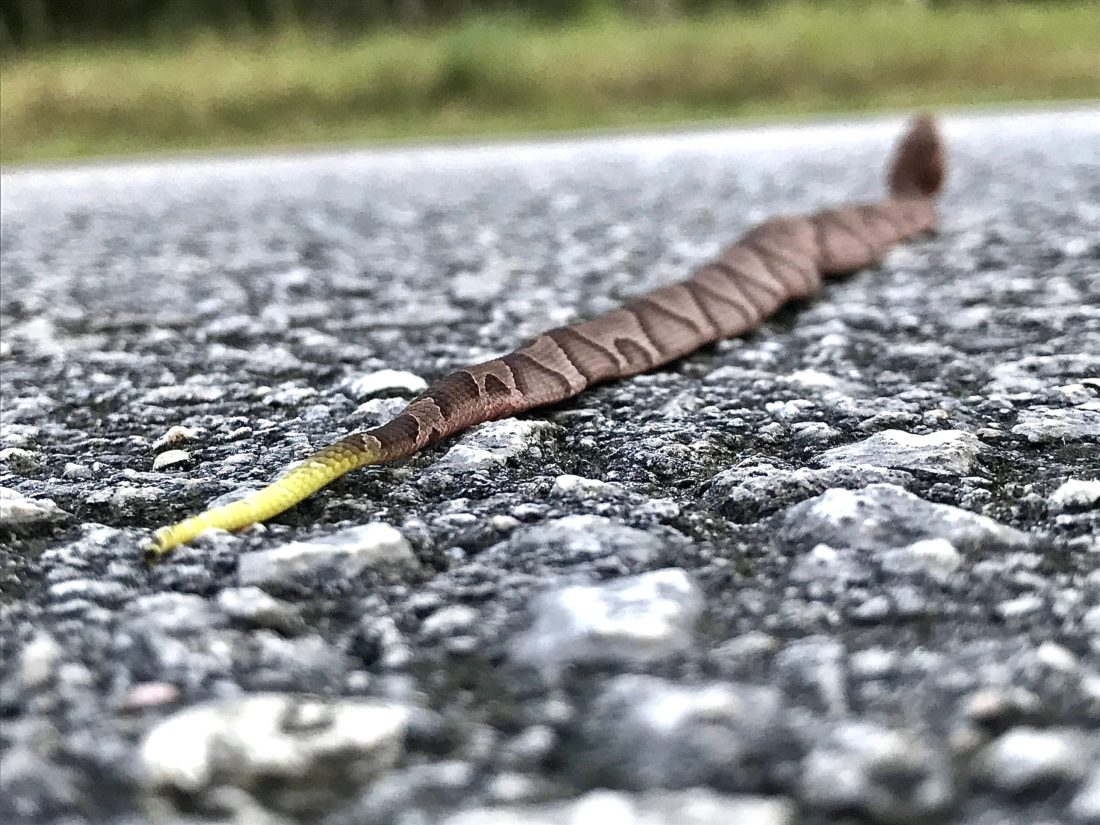
Water Moccasins

Habitat: These aquatic snakes, closely related to copperheads, are fish eaters that frequent swamps, rivers, and other bodies of water and wetlands throughout the South.
Identification: “These are probably the most misidentified snakes in the world and have been the cause of many innocent snake deaths,” Apodaca says. “Most people who see a water snake assume it’s a water moccasin.” The best thing is to leave any snake alone, but water moccasins are thick-bodied with a thick tail but slender neck and large jowls. They also have vertical pupils and a black stripe by each nostril.
Tips: When hiking or hunting, especially in wet areas, watch your step, and wear ankle-high (or higher) boots and thick socks. If out at night, bring a flashlight.
Fun fact: Though maligned as aggressive, water moccasins have a defensive behavior they employ before striking—they open their jaws wide, displaying their pinkish-white mouths (hence the name cottonmouths). “These defensive behaviors, to me, prove that snakes aren’t the killing machines people think they are,” Cecala says. “Water moccasins and rattlesnakes can and do warn us they are dangerous.”
Timber Rattlesnakes

Habitat: These snakes are associated with deciduous forests and rugged terrain, but they live in other habitats too, including hardwood or pine forests, swamps and river floodplains, lowland cane thickets, and agricultural fields. Toward the western parts of the South in higher altitudes, they are generally called timber rattlesnakes, while toward the coast people call them canebrakes.
Identification: Rattlesnakes are the easiest to identify because of their rattle. “They tend to be more reddish-colored closer to the coast and darker the farther west they go,” Cecala adds.
Tips: The same rules for the copperhead and water moccasin apply here, and, Cecala adds, step onto logs instead of over them—that way, you’re not putting your foot right by a likely cover spot.
Fun facts: Herpetologists agree that rattlesnakes are on the more docile end of the snake spectrum. They would much rather hide, aided by their excellent camouflage, or flee than bite.
Note: There are other, rarer Southern rattlesnake species that—unless you’re an avid outdoorsperson—you aren’t likely to run into, including both the largest and the smallest ones in the world. Eastern diamondbacks, native to longleaf pine ecosystems and threatened by habitat loss, can reach eight feet, while pygmy rattlesnakes, which live across Southeast, measure under twenty inches and spend most of their time hidden in leaf litter. And Texas has more than its fair share of rattlesnake species, especially in the extreme West.
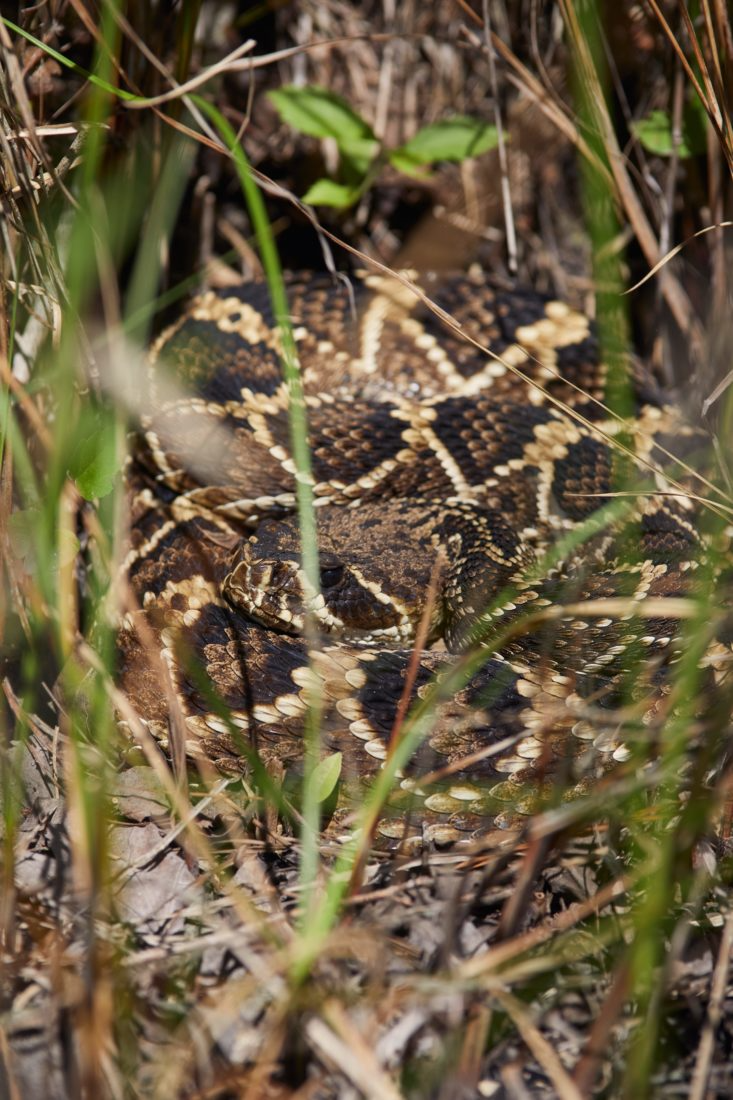
Coral Snakes
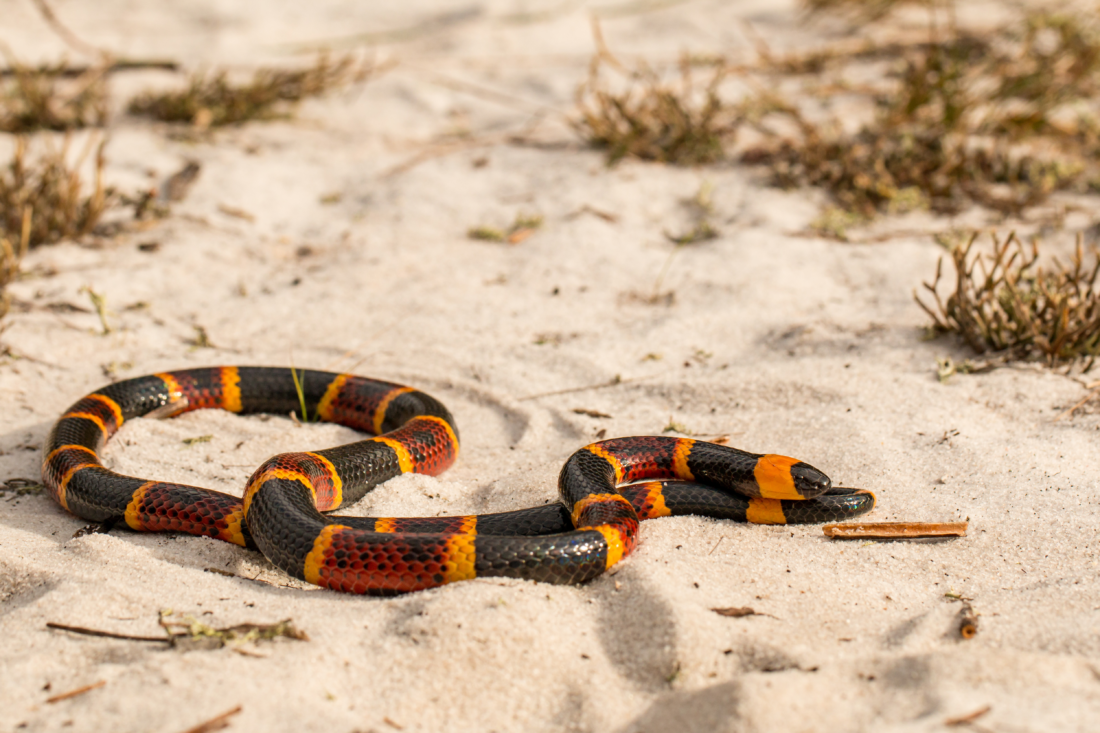
Habitat: The range of coral snakes runs from southeastern North Carolina to extreme eastern Louisiana, and they prefer sandy soil with lots of open ground in ecosystems like longleaf pine savannas, the sandhills, and pine flatwoods. They are a fossorial species, meaning they spend almost their entire lives underground, making it highly unlikely you’d run into one.
Identification: If you did spot a coral snake, you’d be hard-pressed to misidentify it. They have a stunning tricolored pattern of black, red, white, and yellow bands and a small head that doesn’t look anything like that of a pit viper.
Tips: Coral snakes pack a punch. They are the most venomous snakes in the region—if you do run into one, keep the heck away from it. “But bites are almost impossible and extremely rare for a few reasons,” Apodaca adds. “Coral snakes are extremely secretive. Plus, their heads are so tiny it would be difficult for them to actually bite you unless you presented them with your hand or something.”
Fun fact: Cobras and mambas are the closest relative of the coral snake. Their venom, unlike that of pit vipers, is primarily a neurotoxin. “Compared to other predators like sharks or big cats, the way venomous snakes kill is absolutely surgical,” Cecala points out. “It’s a testament to how specialized and adapted they are.”
Some parting words: “If you are seeing snakes in your yard, it’s because you have a snake-friendly yard. Killing one snake isn’t going to mean there aren’t more or that another won’t come to replace the one you killed,” Cecala says. “The key is removing the two things they want—shelter and food. So maybe get rid of that old wood pile, don’t leave food out, and don’t have a bunch of places they or their prey can hide.”
“You want my advice for a long life? Go outside and appreciate the natural beauty around you, even things you might not want to see,” Apodaca says. “Watch out for cows. Don’t ever shake a vending machine. And if you see a venomous snake, just respect it, and walk the other way.”




